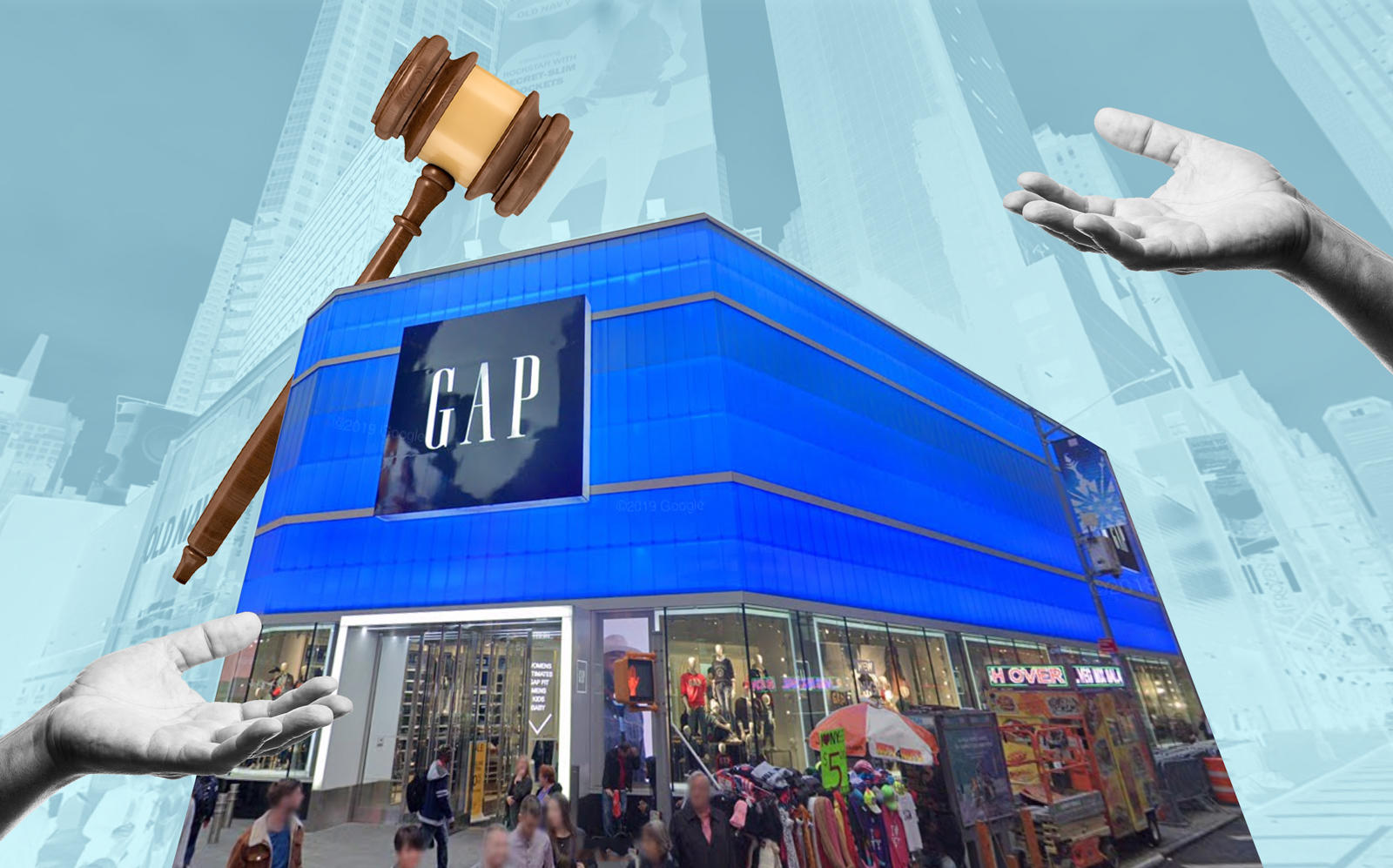Among coronavirus-battered retailers, the Gap has been one of the most high-profile proponents of the idea that the pandemic has canceled its rent obligations.
Legal experts have been skeptical, and a judge’s decision this week over rent owed at the Gap’s Times Square flagship store would indicate the courts are, too.
On Wednesday, the judge ordered The Gap and its Old Navy subsidiary to keep paying their landlord nearly $3 million a month in rent at the 60,000-square-foot space that remains closed. The companies must also put up a $5.8 million bond to secure payment of rent arrears from May and June, according to the order.
Last month, the Gap and Old Navy sued the landlord over their pricey leases at the property, the Bow Tie Building at 1530 Broadway. Wednesday’s judgment did grant the companies a preliminary injunction, which blocked the landlord from terminating those leases — but included rent payment and the bond as conditions.
The Gap’s lawyers have argued that it should not be required to pay rent moving forward, “because rent is disputed and tenants are not reaping the benefits of occupancy.” The landlord, meanwhile, pointed to evidence that the Gap was still using the property’s billboard, and still had customers on the premises, to argue it was acting in bad faith.
But as part of her ruling, Judge Debra James provided the companies only a 10-percent reduction in rent, in light of the “extraordinary circumstances” of the global pandemic.
Attorneys with Rosenberg & Estis, who are representing the landlord — a family business now managed by Charles Moss III — view the decision as an absolute win for their client. “In effect, it undermines what [the Gap was] attempting to accomplish by getting away without paying any rent, and trying to leverage that position with the landlord to modify or release them from the lease,” co-founder Warren Estis said.
As one of the earliest decisions in the Gap’s many ongoing rent disputes, this ruling could set the tone for other retail rent lawsuits, he said. “It’s a message that the courts are not going to allow big businesses to push around smaller entities in the hopes of getting a better deal.”
Attorneys for the Gap did not respond to a request for comment. In response to prior inquiries, a Gap spokesperson noted that “our stores are being subject to restrictions that no one foresaw before the closures, much less when the leases were entered.”
“We remain committed to working with our landlords on mutually agreeable solutions and fair rent terms,” the statement continued.
Read more



“Ghost town”
The Gap’s Times Square lawsuit employs the same legal strategy as another suit the company filed earlier this month, against a landlord in the Financial District. That suit argued the “purpose of the lease has been completely frustrated” and was effectively terminated in March, because of its forced closure caused by the pandemic.
“In March 2020, everything changed. New York City became a ghost town and overnight, retail activity in New York City came to an abrupt halt,” both lawsuits say.
The Gap’s line of argument put it in the peculiar position of seeking to block the lease termination, while also claiming the lease was already terminated. The judge determined that this was not contradictory because a court has yet to rule on whether the lease was actually terminated.
To bolster its argument that the retailer should keep paying rent, the landlord noted that the Gap raised $2.25 billion in junk bonds in April, further evidence it is “obviously financially able today to meet their leasehold obligation.”
The remaining value of the two Times Square leases, which run through 2030, is valued in the hundreds of millions of dollars.
Both the Times Square and Financial District Gap stores remain closed, according to the company’s store locator website. Many other Gap stores in New York are open for in-store shopping, which has been allowed as of Phase 3 of the city’s reopening.
The Bow Tie Building was previously home to a Toys R Us, and is also home to MacDonald’s new flagship store, which replaced the old flagship a few blocks away at 220 West 42nd Street.
Contact Kevin Sun at ks@therealdeal.com.




